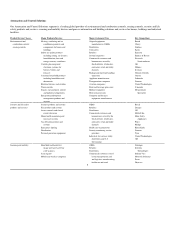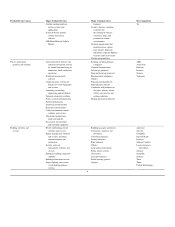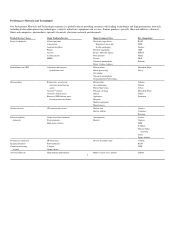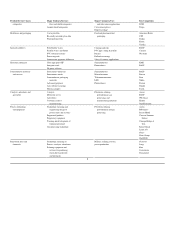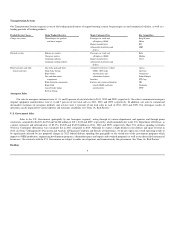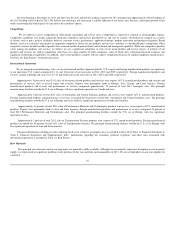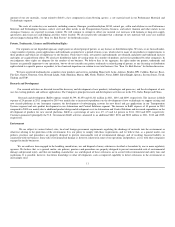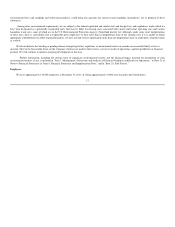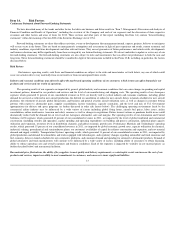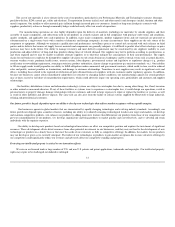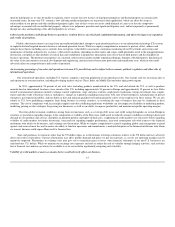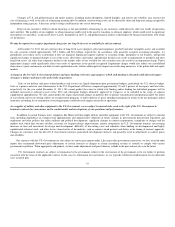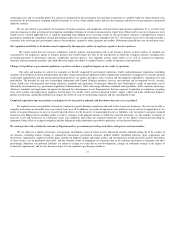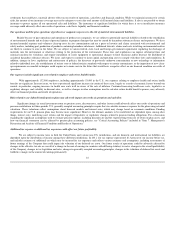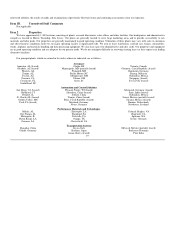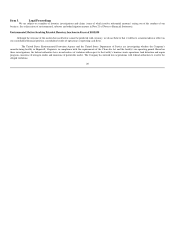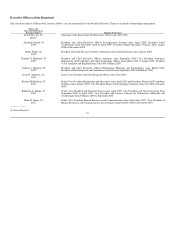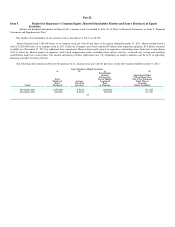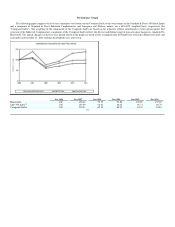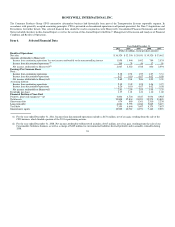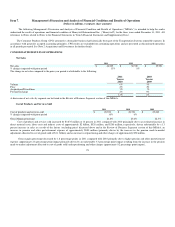Honeywell 2011 Annual Report Download - page 18
Download and view the complete annual report
Please find page 18 of the 2011 Honeywell annual report below. You can navigate through the pages in the report by either clicking on the pages listed below, or by using the keyword search tool below to find specific information within the annual report.
upon by third parties or we may be unable to maintain, renew or enter into new licenses of third party proprietary intellectual property on commercially
reasonable terms. In some non-U.S. countries, laws affecting intellectual property are uncertain in their application, which can affect the scope or
enforceability of our patents and other intellectual property rights. Any of these events or factors could diminish or cause us to lose the competitive
advantages associated with our intellectual property, subject us to judgments, penalties and significant litigation costs, and/or temporarily or permanently
disrupt our sales and marketing of the affected products or services.
Cybersecurity incidents could disrupt business operations, result in the loss of critical and confidential information, and adversely impact our reputation
and results of operations.
Global cybersecurity threats can range from uncoordinated individual attempts to gain unauthorized access to our information technology (IT) systems
to sophisticated and targeted measures known as advanced persistent threats. While we employ comprehensive measures to prevent, detect, address and
mitigate these threats (including access controls, data encryption, vulnerability assessments, continuous monitoring of our IT networks and systems and
maintenance of backup and protective systems), cybersecurity incidents, depending on their nature and scope, could potentially result in the misappropriation,
destruction, corruption or unavailability of critical data and confidential or proprietary information (our own or that of third parties) and the disruption of
business operations. The potential consequences of a material cybersecurity incident include reputational damage, litigation with third parties, diminution in
the value of our investment in research, development and engineering, and increased cybersecurity protection and remediation costs, which in turn could
adversely affect our competitiveness and results of operations.
An increasing percentage of our sales and operations is in non-U.S. jurisdictions and is subject to the economic, political, regulatory and other risks of
international operations.
Our international operations, including U.S. exports, comprise a growing proportion of our operating results. Our strategy calls for increasing sales to
and operations in overseas markets, including developing markets such as China, India, the Middle East and other high growth regions.
In 2011, approximately 55 percent of our total sales (including products manufactured in the U.S. and sold outside the U.S. as well as products
manufactured in international locations) were outside of the U.S. including approximately 30 percent in Europe and approximately 12 percent in Asia. Risks
related to international operations include exchange control regulations, wage and price controls, employment regulations, foreign investment laws, import,
export and other trade restrictions (such as embargoes), changes in regulations regarding transactions with state-owned enterprises, nationalization of private
enterprises, government instability, and our ability to hire and maintain qualified staff and maintain the safety of our employees in these regions. We are also
subject to U.S. laws prohibiting companies from doing business in certain countries, or restricting the type of business that may be conducted in these
countries. The cost of compliance with increasingly complex and often conflicting regulations worldwide can also impair our flexibility in modifying product,
marketing, pricing or other strategies for growing our businesses, as well as our ability to improve productivity and maintain acceptable operating margins.
Uncertain global economic conditions arising from circumstances such as sovereign debt issues and credit rating downgrades in certain European
countries or speculation regarding changes to the composition or viability of the Euro zone could result in reduced customer confidence resulting in decreased
demand for our products and services, disruption in payment patterns and higher default rates, a tightening of credit markets (see risk factor below regarding
volatility of credit markets for further discussion), increased risk regarding supplier performance, increased counterparty risk with respect to the financial
institutions with which we do business, and exchange rate fluctuations. While we employ comprehensive controls regarding global cash management to guard
against cash or investment loss and to ensure our ability to fund our operations and commitments, a material disruption to the financial institutions with whom
we transact business could expose Honeywell to financial loss.
Sales and purchases in currencies other than the US dollar expose us to fluctuations in foreign currencies relative to the US dollar and may adversely
affect our results of operations. Currency fluctuations may affect product demand and prices we pay for materials, as a result, our operating margins may be
negatively impacted. Fluctuations in exchange rates may give rise to translation gains or losses when financial statements of our non-U.S. businesses are
translated into U.S. dollars. While we monitor our exchange rate exposures and seek to reduce the risk of volatility through hedging activities, such activities
bear a financial cost and may not always be available to us or successful in significantly mitigating such volatility.
Volatility of credit markets or macro-economic factors could adversely affect our business.
15


